- Xinjiang will give full play to its geographical advantages and speed up the building of a comprehensive transportation system
- Xinjiang's role as a major international corridor and transportation hub along the Silk Road Economic Belt will be enhanced
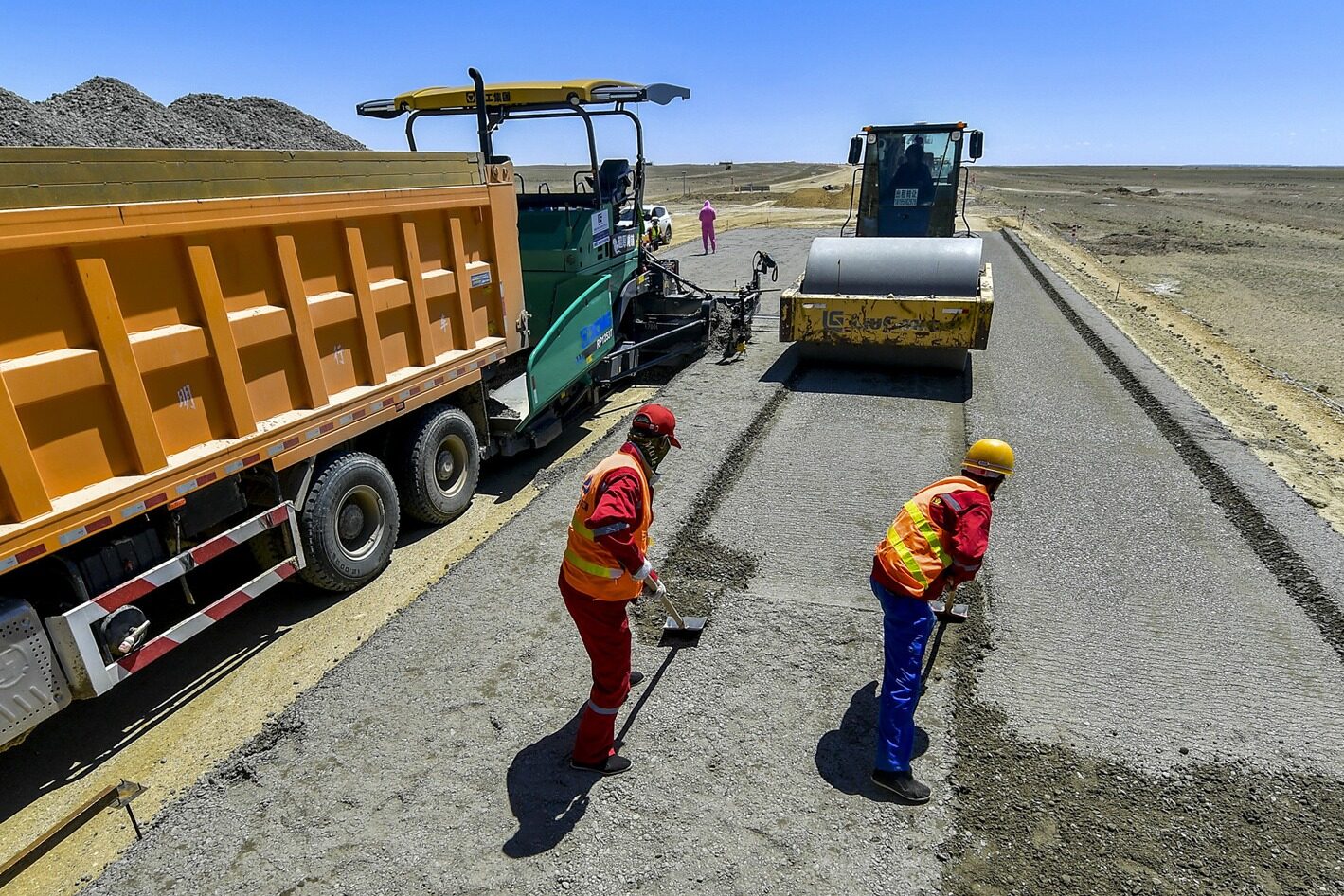
If you want to build a rich road, the road through 100 industry xing. Roads are the lifeblood of Xinjiang, which covers one sixth of China's land area. With the promotion of the Belt and Road construction, Xinjiang's transport development is full of momentum. During the decade, Xinjiang added 62,200 km of new roads, bringing the total length of roads to 217,300 km. Among them, the total length of national and provincial trunk highways reached 36,700 kilometers, and the total length of expressways exceeded 10,000 kilometers. All prefectures (cities) have access to expressways, and the city cluster on the north slope of Tianshan Mountain has taken the lead in entering the era of "eight-lane" expressways. All 107 counties (cities) now have access to second-class roads or above, and 93 of them have access to expressways. The total length of rural highways reached 180,600 kilometers, and all towns and townships and qualified incorporated villages had paved roads.
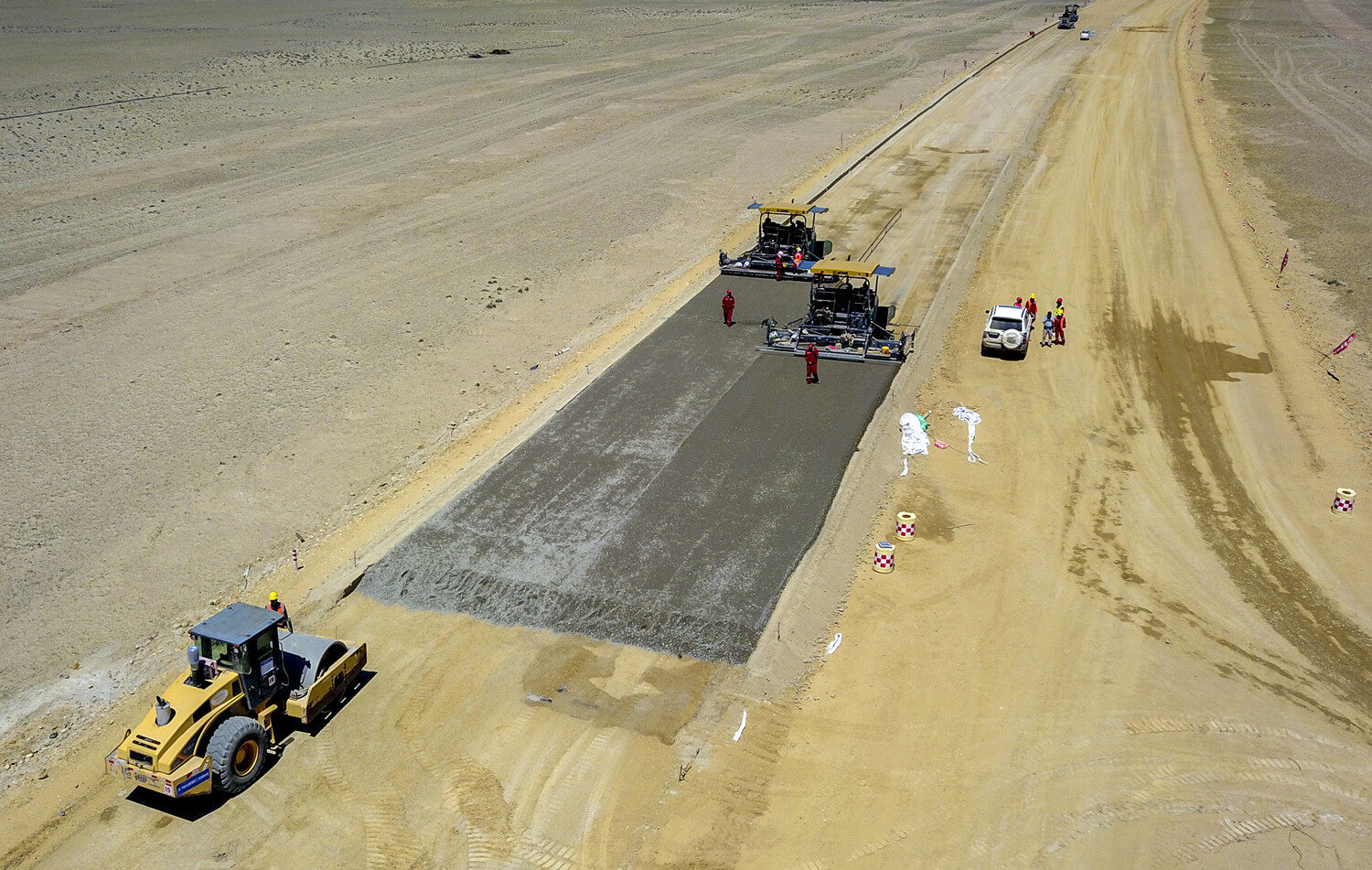
In recent years, steady progress has been made in the construction of major trans-regional expressways in Xinjiang, with the completion of the three major expressways in the south, north and central regions, the completion of the expressways around the Junggar Basin, the completion of the Tarim Basin expressways, the opening of the third desert highway, and the completion of the Beijing-Xinjiang Expressway, the second major passageway in and out of Xinjiang. The third major passageway in and out of Xinjiang, the Xining to Hotan Expressway, has been completed in Xinjiang. According to Ai Shanjiang Ai Hemaiti, deputy secretary of the Party Committee and head of the Xinjiang Department of Transport, Xinjiang's transportation sector is moving from "road and bridge" to "commercial bridge", and the major international transportation corridor is becoming a major corridor for international trade. The roads connect not only the vast rivers and mountains, but also the development of resources and industries. In the volume of goods transported out of Xinjiang, coal has long occupied the first place in the volume of goods transported out of Xinjiang by road, and oil and gas occupy the third place.
Three passages run smoothly from north to south of the Tianshan Mountains
One hundred years ago, Dr. Sun Yat-sen outlined a grand vision in his Strategy for the Founding of the People's Republic of China: "A second major passage into Xinjiang from Beiping (today's Beijing) in the east, through Alxa, and to Dihua (today's Urumqi) in the west." That dream has now come true.
On the vast land of Tiangao, a jade belt like heaven road stretches to the horizon from the long yellow sand and barren Gobi. This is the longest highway project across the desert in the world -- Beijing-New Expressway. At 12 o 'clock on June 30, 2022, as a series of cars drove out of the Yiwu toll station in Xinjiang province, the 515 km section from Wutong Daquan to Mulu of the G7 Beijing-New Highway was officially opened to traffic, marking the smooth operation of the "last kilometer" of the Beijing-New highway. Thus, the whole line of G7 Beijing-New Expressway was completed and opened to traffic. Wang Chaoyang, the person in charge of the first civil construction Contract section of Balikun to Mulei section of Beijing New Expressway of China Railway 15th Bureau Group No.1 Engineering Co., LTD., said: "We are rooted in the Gobi, facing the wind and sand, fighting blizzard, fighting high temperature, and seeing the results of four years of construction today, our heart is excited and surging."
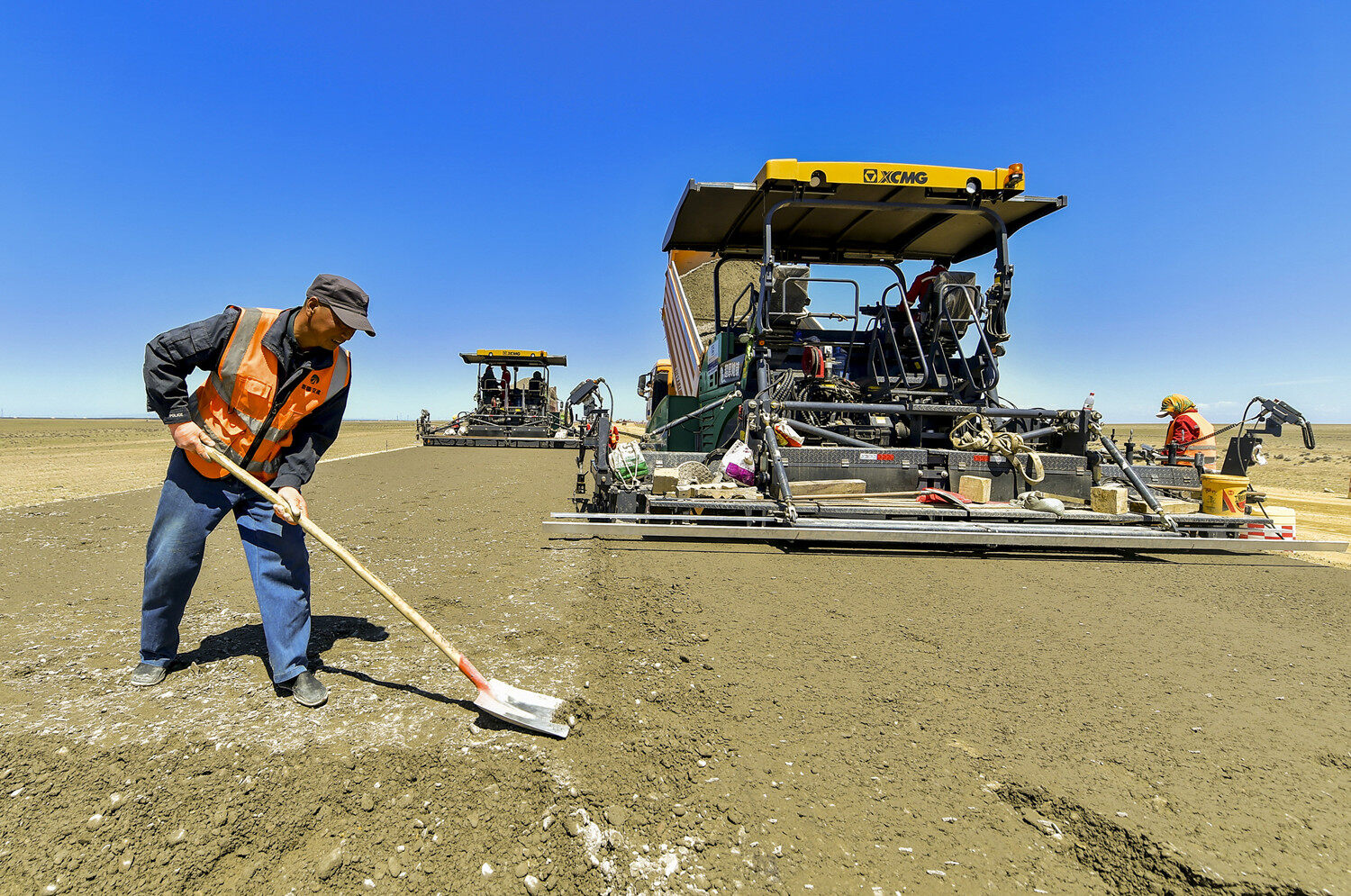
Beijing-new Expressway is the second all-weather highway artery in and out of Xinjiang after Lianhuo Expressway, with a total length of more than 2,800 kilometers, passing through Beijing, Hebei, Shanxi, Inner Mongolia, Gansu and Xinjiang six provinces, among which the Wutong Daquan to Mulu section has a total length of about 515 kilometers, and it is the first PPP mode implemented in Xinjiang to open to traffic. It is also the longest operational expressway opened at one time in China, which has shortened the highway mileage between Beijing and Urumqi by more than 1,300 kilometers. On the same day, the Khoshrapu Yerqiang River Bridge construction project (5.010km in length) and the S20 Wugongtai to Karamay first-class highway project (206.692km in length) were also opened to traffic. The G578 line with a total length of 71 kilometers from Dunma Zha to Nierk construction project also passed acceptance smoothly. These three projects have made the total length of expressways in Xinjiang more than 6,000 kilometers, the road network structure is smoother, and the goal of "connecting Xinjiang with inner regions and faster access to Xinjiang" is clearer.
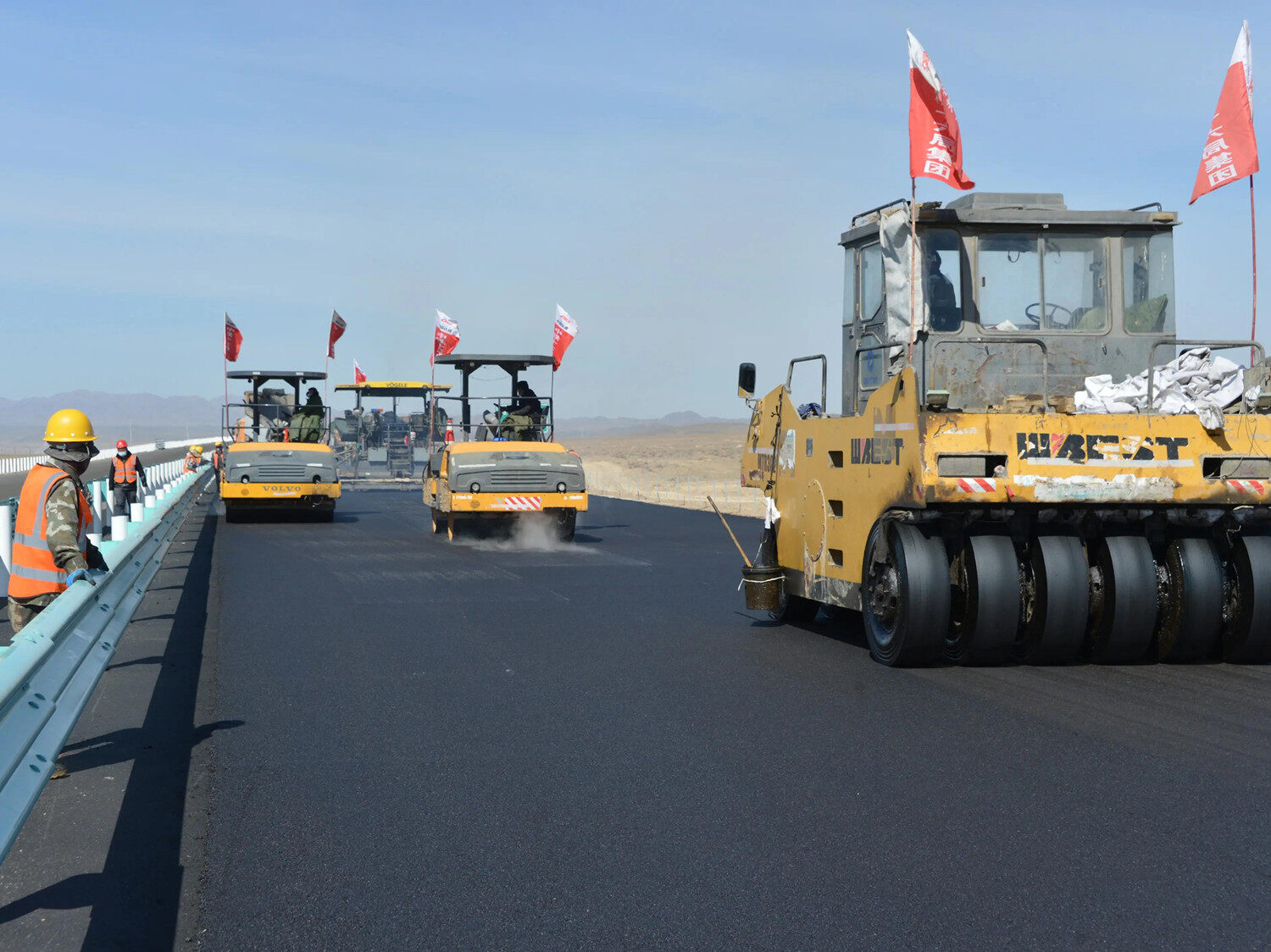
Since the construction started in July 2017, the project has traversed the Gobi, crossed the desert, crossed the wetland and climbed over the hill. The natural environment is extremely harsh and the construction conditions are extremely difficult. However, all the participating units did not live up to their requirements. The highway builders showed great courage to fight against the wind and the scorching sun, overcome the severe weather with frequent sandstorms and difficulties in the transportation of materials and construction organization, and forged ahead as one, bearing hardships and working hard. They fought for more than 1,460 days and nights and overcame many unimaginable difficulties. To ensure the smooth operation of the project on schedule, for the development of Xinjiang's transportation industry wrote a heavy brush brush, for the people of Xinjiang handed over a satisfactory answer. Da Wenbin, head of the Beijing-New Xinjiang Project of China Railway Construction Investment Group Co., LTD., said: "After the completion of the Beijing-New high-speed project, it will form an all-weather corridor into and out of Xinjiang, and the completion of the northern corridor of the Silk Road Economic Belt will effectively promote the economic and social development of Xinjiang, and become a road of prosperity, unity and happiness for the people along the road."
From Urumqi to Beijing, you need to take the Lianhuo Expressway and Beijing-Guangzhou Expressway, and bypass Lanzhou, Xi 'an, Zhengzhou, Shijiazhuang and other places. With the opening of the Beijing-New Expressway, you now have the shortest connection line from Urumqi to Beijing, which saves more than 1,300 kilometers of journey than the original road. According to experts from the Ministry of Transport, the Beijing-New Expressway will be the fastest passage connecting Northeast China, North China and Northwest China, creating the fastest Asia-Europe land bridge between Tianjin Port and Rotterdam Port in the Netherlands. Compared with G30 connecting the Hua-Huo Expressway, the Beijing-new Expressway shortening the distance from Urumqi to Beijing by more than 1300 kilometers. Liu Ping, deputy secretary of the Party Committee of the Xinjiang Transport Department, said: "After the completion of the Beijing-Xin expressway, it will further improve the transportation capacity of the passageway in and out of Xinjiang. It is of great significance to improve the road network of the country and Xinjiang, realize the inner ring of Xinjiang, faster access to Xinjiang, improve regional traffic and ease the regional traffic pressure."
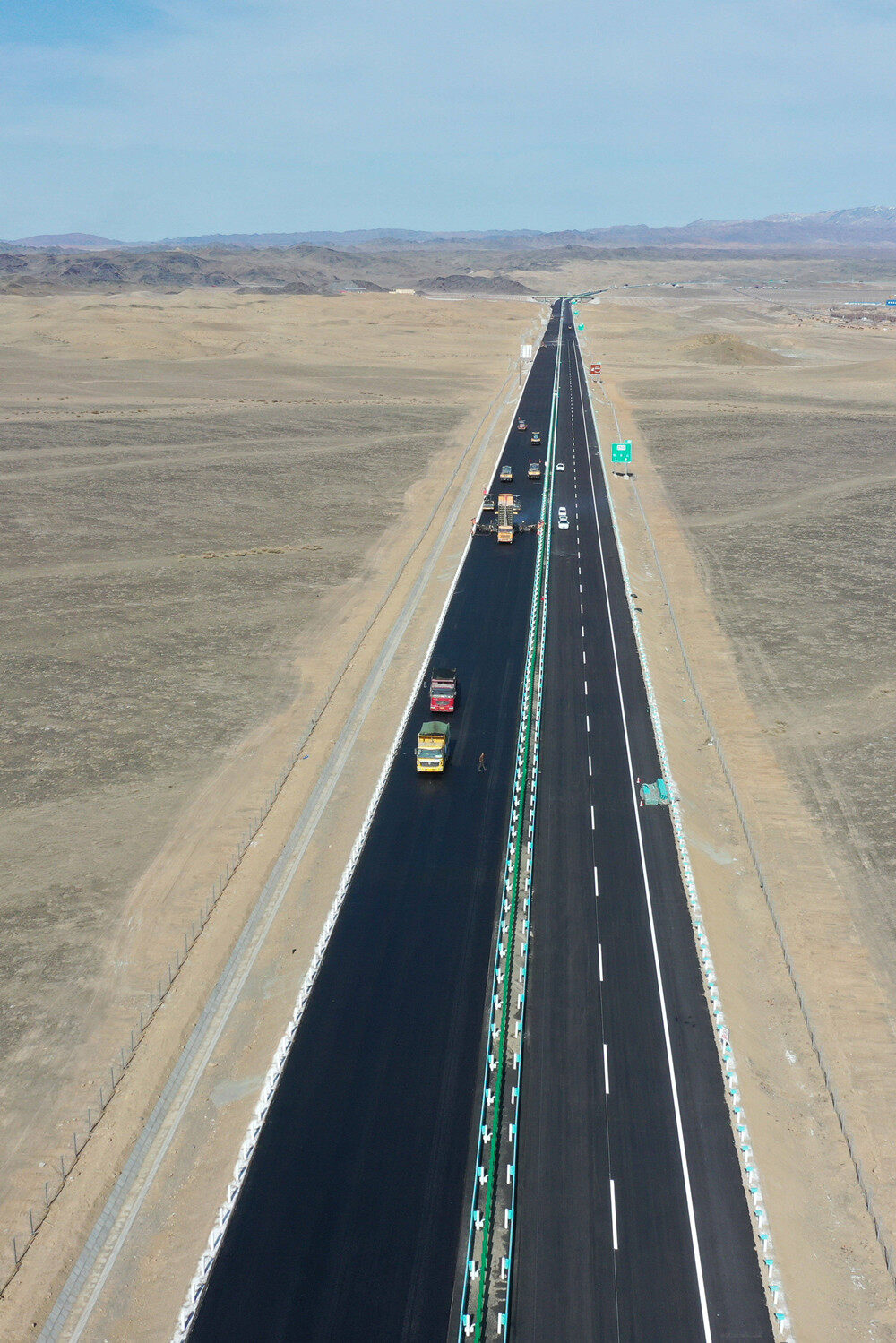
On August 30, 2022, the Yitunbulak-Ruoqiang Expressway in Ruoqiang County, Bayingolin Mongolian Autonomous Prefecture, Xinjiang Province, was officially opened to traffic. Pei Minshan, a member of the Standing Committee of the Party Committee and deputy general manager of CCCC, said that over the past few years, the majority of construction workers have lived up to hardships and hardships in the open, wearing masks to carry out production, and effectively solved the technical difficulties. If the highway is completed and opened to traffic eight months ahead of schedule, it has delivered a satisfactory answer to the people of Xinjiang.
According to the introduction, the entire line of Yiruo expressway is located in Ruoqiang County, a total length of 294 kilometers, and the existing G218 line is connected, is the G30 line Linhuo expressway, G7 line Beijing-Xin expressway, after the third highway in and out of Xinjiang. It is worth noting that the average altitude along the highway is nearly 3,300 meters, and it crosses the two "no man's land" of Lop Nur and Altun Mountains. During the construction process, difficulties such as no water, no electricity, no network, no food materials, no supplies, high temperature, high cold, hypoxia and sandstorms must be overcome. Among them, the Bashkogan No. 2 tunnel in the Bashkogon Mountain area, which is about 3,100 meters above sea level, is a "stuck" project of the highway. It belongs to the high cold and high altitude long highway tunnel, and the construction risk is extremely great.
After the opening of the Yiruo Expressway, vehicles entering Xinjiang from Yitunbulak can reach Ruoqiang, Qiemo, Hotan and even Kashgar on the expressway all the way. The Nantong Expressway, the core area of the Silk Road Economic Belt, has been fully speeded up. At the same time, Yiruo Expressway connects with Weili to Ruoqiang Expressway and G0711 from Urumqi to Weili Expressway to the north, and then connects with S21 Altay to Urumqi expressway, forming a highway corridor of southern and northern Xinjiang from Yitunbulak to Altay. Wang Jiuzhong, Secretary of the Party Group and Deputy Director of the Standing Committee of the Bazhou People's Congress said, "We will take the opening of the expressway as an opportunity, seize the opportunity, rely on the regional advantages of Bazhou, based on the good service of road efficient operation, and speed up the building of three-dimensional comprehensive transportation system, which is smooth outside and connected inside, convenient and efficient, strong guarantee and satisfying to the people."
The sea of sand becomes a thoroughfare
On June 30, 2022, the opening ceremony of the S254 Weili to Jiemo Desert Road, the third highway through the Taklimakan Desert in Xinjiang, was held in Weili County, Xinjiang, marking the completion of China's third highway through the Taklimakan Desert. So far, the total length of China's road through the world's second largest moving desert is more than 1,200 kilometers. On the same day, the opening ceremonies were held at the same time for the Khotan G315 Minfeng to Luopu Road project, the Aksu Transit Road Project of G314 in Aksu District, and the Changji Nanshan Parallel Road project. The simultaneous opening of the four roads will promote the realization of the goals of "connecting the interior of Xinjiang, facilitating the entry and exit of Xinjiang, facilitating the northern and southern Xinjiang, and connecting the entry and exit of Xinjiang", playing an important pioneering role in providing higher standard and more efficient services, integrating into the new development pattern, and promoting the high-quality economic and social development of the autonomous region.

With the opening of the Weige Desert Highway, it will effectively improve the local people's long travel distance, high cost of living, difficult to sell agricultural products. At the same time, it will also provide strong support for future oil and gas exploration, development and transportation, and further promote the economic and social development of southern Xinjiang. Zheng Mingquan, deputy director of the Xinjiang Department of Transportation, said, "After the completion of the S254 line, the distance to Korla will be shortened by about 350 kilometers, and the driving time will be shortened from 12 hours to more than 6 hours. This is of great significance to the travel and economic and social development of people of all ethnic groups in southern Xinjiang."
The Taklimakan Desert, which means "a place you can't get in or out of" in Uighur language, is known locally as the "sea of death." The total length of the Weige Desert Highway opened to traffic this time is 3 34 kilometers, so that the distance between Qiemang County and Korla city is shortened 350 kilometers, after the Tarim Desert Highway, the third road across the "sea of death" desert highway. The completion of the highway will effectively improve the local travel distance, high cost of living, agricultural products are difficult to sell. Tursunjiang Daman, 51, was particularly excited. Over the past few decades, the travel time from Korla city to Qiemao County has changed from three days to more than ten hours. Now it takes six hours. "The road home is getting faster and faster!"
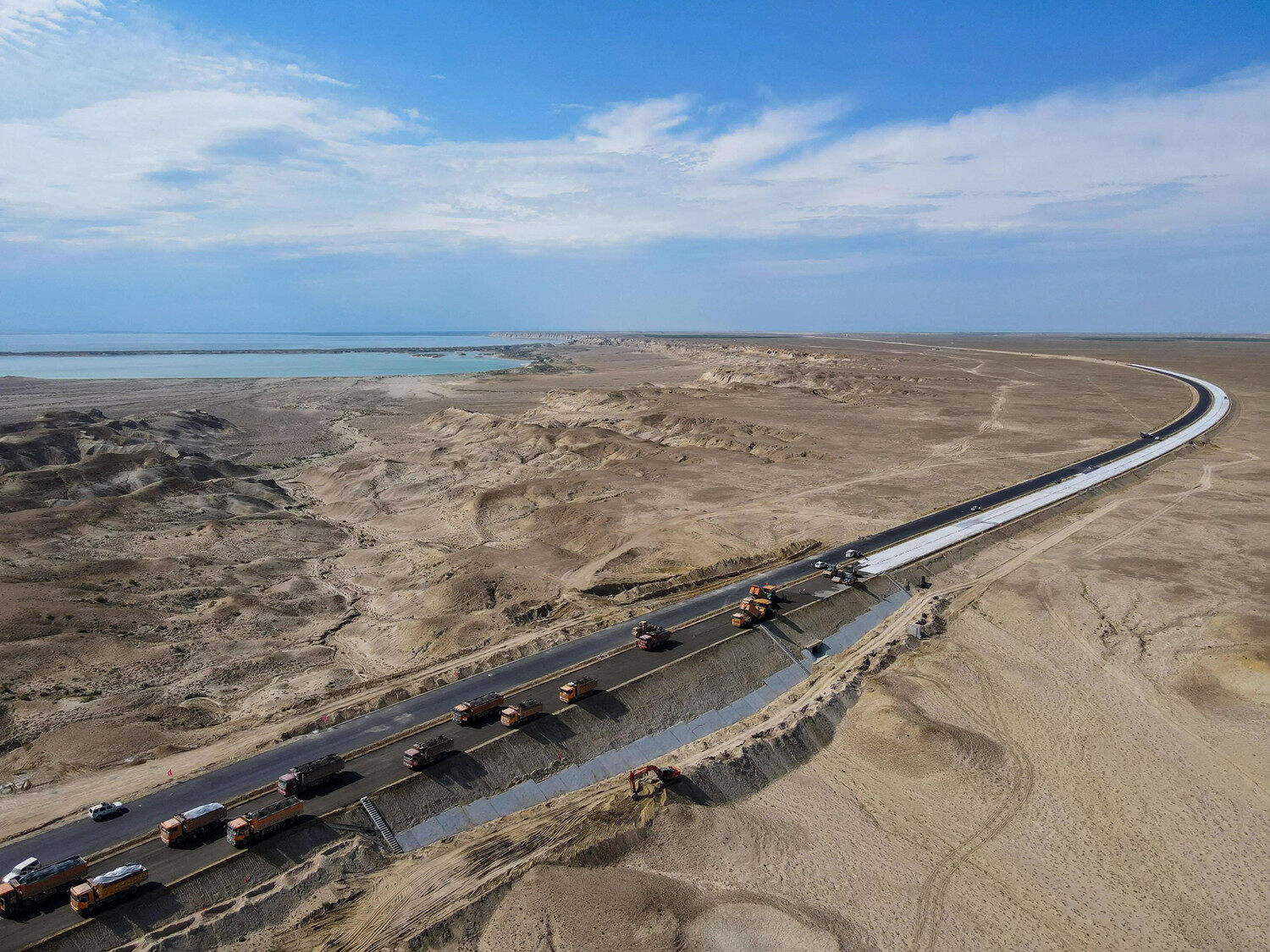
The construction of Weige Desert Highway started in October 2017. It is one of the desert highways with the widest distribution of mobile dunes, the most severe construction conditions and the most difficult construction in the world. Wang Yunfei, project manager of Xinjiang Weige Desert Road of CCCC, said that Weige Desert Road has solved the key technical problems of wind-blown sand subgrade filling in desert areas. It was more difficult to build than the first two roads across the desert. Its terrain conditions are rare in China. Through the dense and tall sand hills in the eastern part of the desert, a total of 32 tall sand hills have been dug and 28 depressions between hills have been filled, among which the largest sand hill took nearly half a year to build. In the face of the sand-infested desert, builders have adopted the "grass grid + sand barrier" protection project to keep pace with the road construction. 58 million square meters of grass grid and over 900 kilometers of sand barrier have been laid on both sides of the road to prevent the road from being buried by sand. "It used to be very inconvenient to go home on vacation. After taking a train from Urumqi to Korla, I had to take a bus for about 13 hours. The road was very narrow and shaky. When the road is finished, the road will be even smoother and it will only take more than five hours to travel from Korla to Chaemo." Said Genaguri Aimel, a student from Urumqi who lives in Qiemah County.
The opening of the highway has boosted the investment confidence of enterprises in the areas along the route. Xinjiang Jiyuan Animal Husbandry Development Co., LTD., located in Qiemang County, raises more than 6,000 cattle. "This road saves nearly 1,000 yuan in transportation and breeding costs for each cow, and we plan to invest another 500 million yuan to expand the scale of breeding." Said Guo Chengli, deputy general manager of the company. Zhang Qing, Party Secretary of the Culture and Tourism Bureau of Qiemo County, said: "Qiemo is rich in history, culture and resource landscape. After the opening of the Weige Desert Highway, it will provide a historic opportunity for the tourism industry along the road. In order to give full play to the role of the highway, we plan to build more basic service facilities along the road, including communication base stations, restrooms, parking lots, car camps and so on, to provide more reliable service guarantee for tourists from south to north." Editor/He Yuting
Comment
 Praise
Praise
 Collect
Collect
 Comment
Comment
 Search
Search


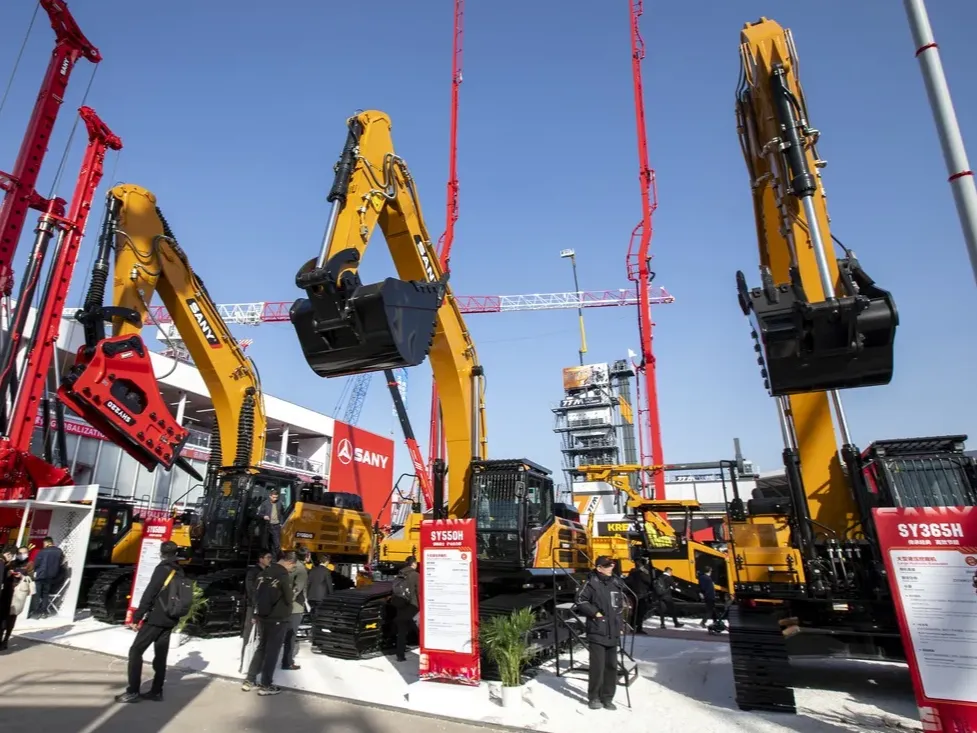
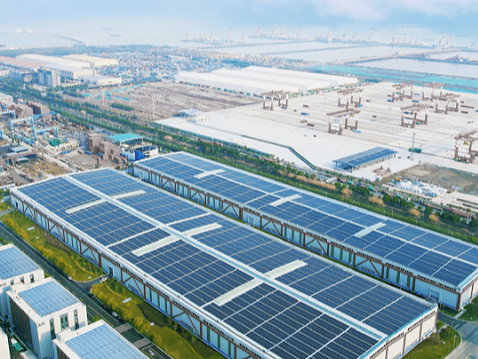



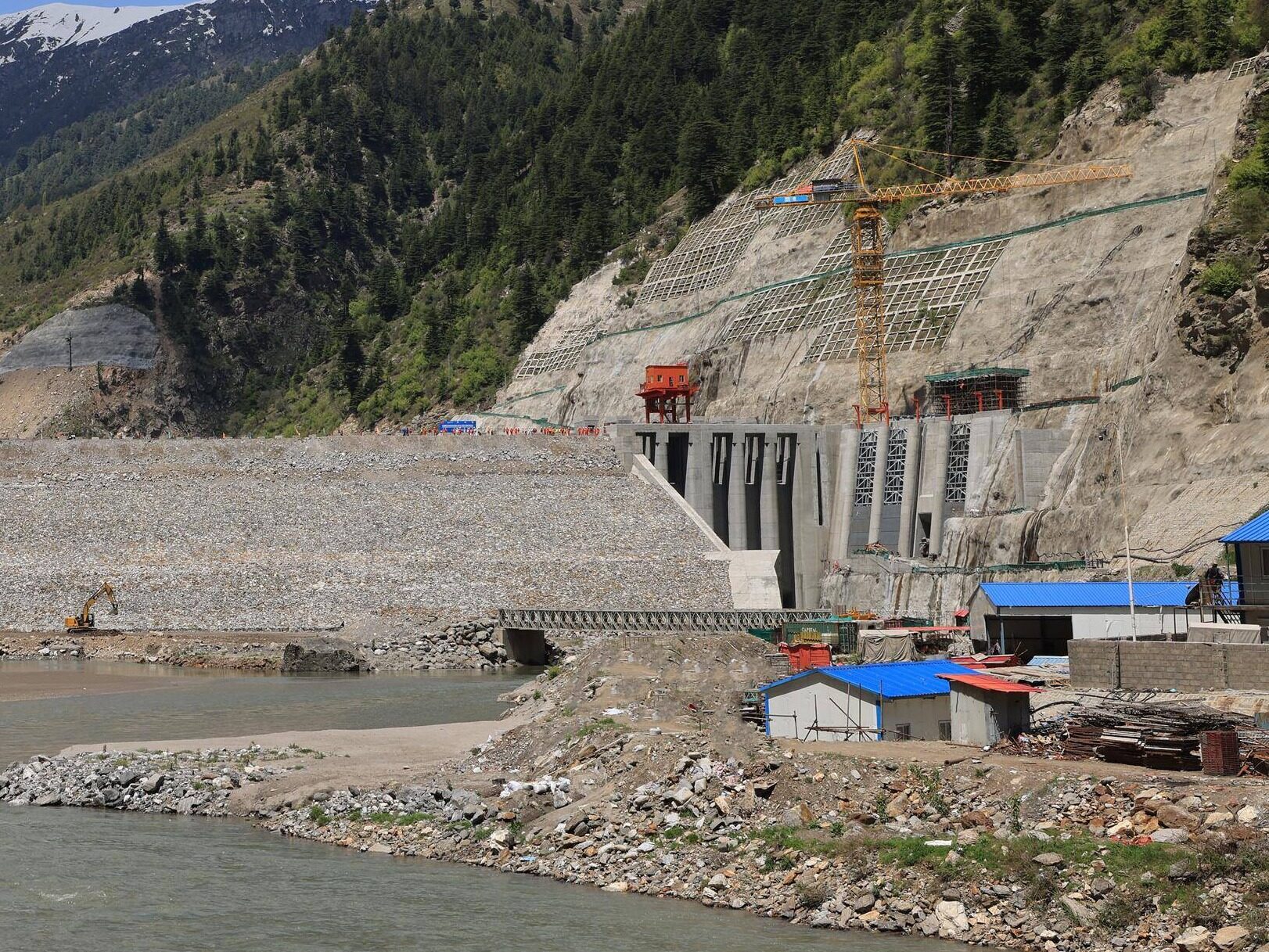






Write something~